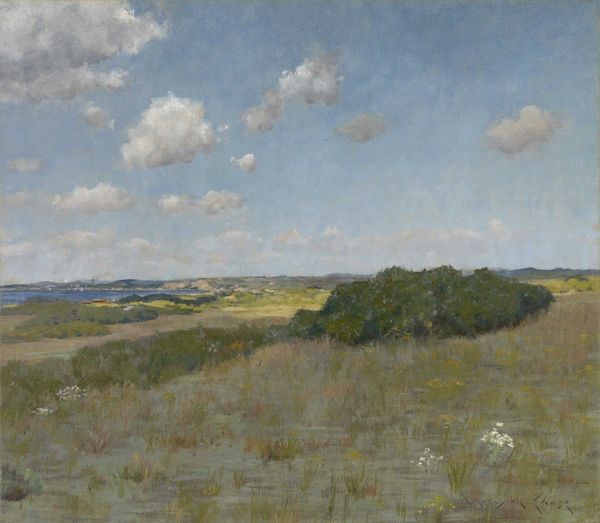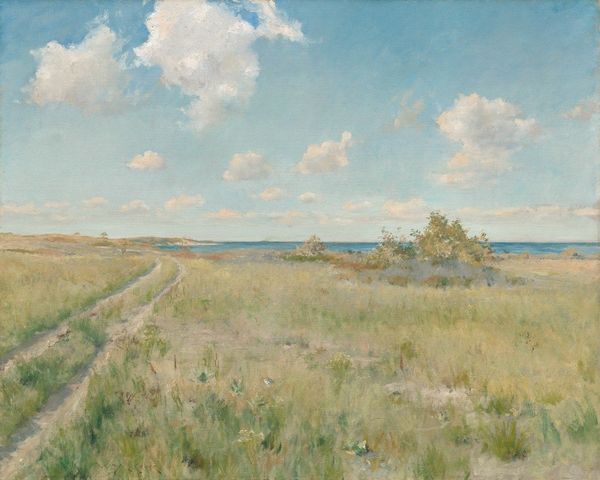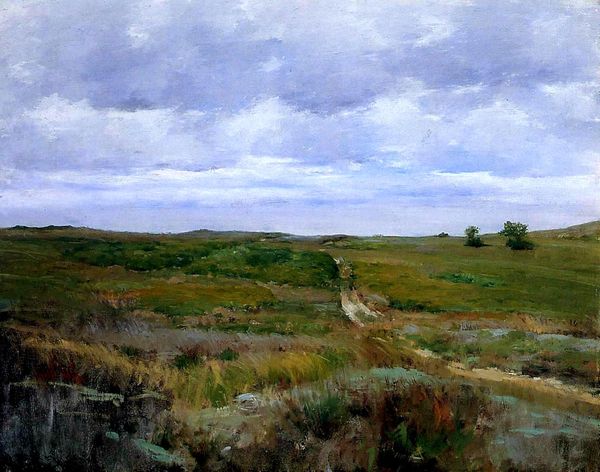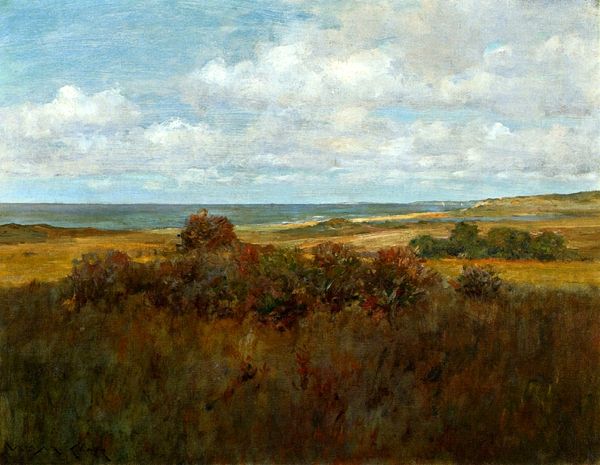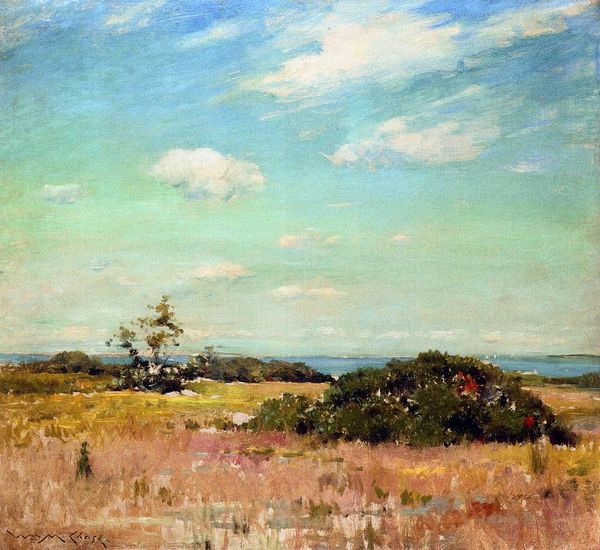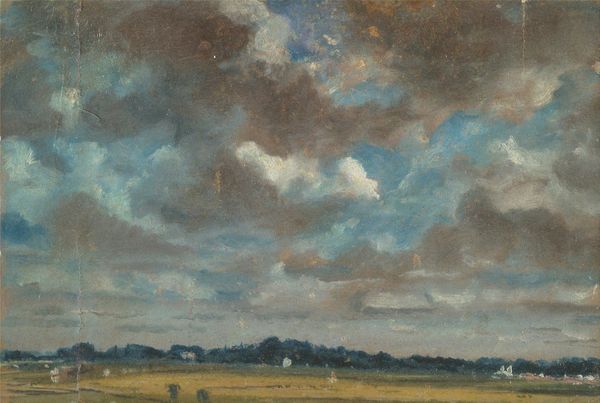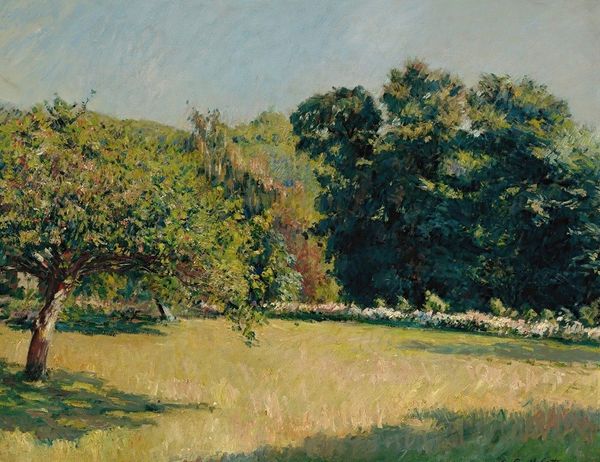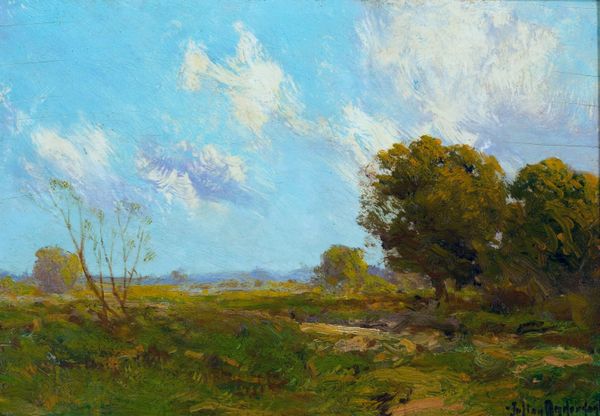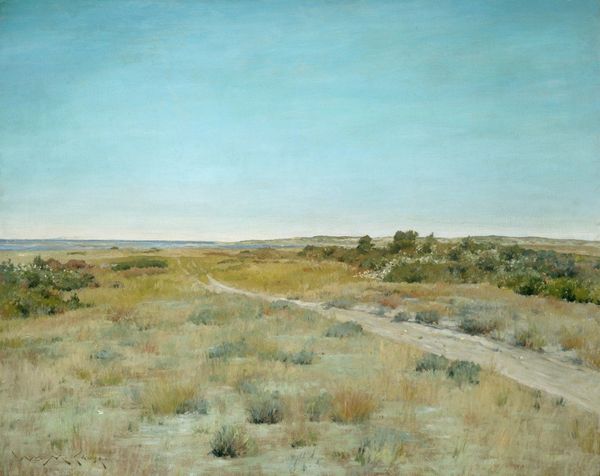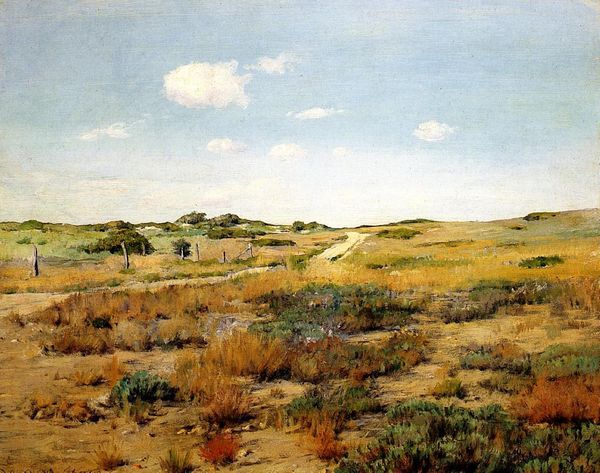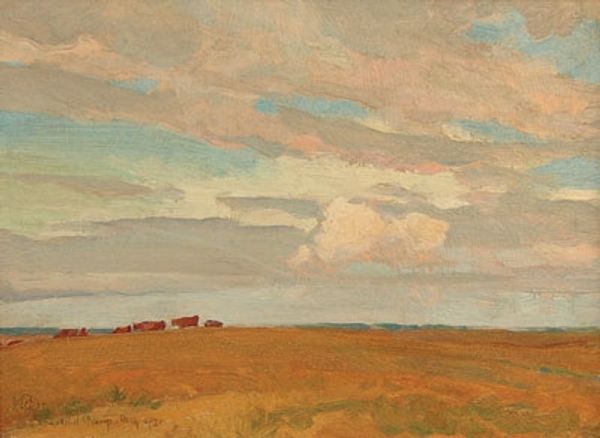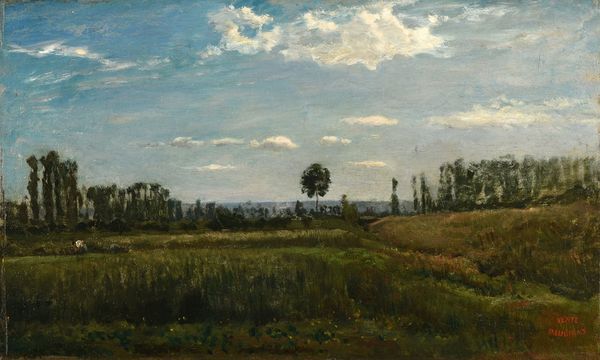
Copyright: Public Domain: Artvee
Editor: Here we have William Merritt Chase's "Autumn," painted around 1895, done en plein air with oil paint. The palette is quite soft, almost muted. I'm curious, what stands out to you when you look at it? Curator: What strikes me is how this seemingly simple landscape engages with the complex politics of leisure and class in the late 19th century. Chase, as an Impressionist, wasn't just painting pretty pictures. How do we understand his choice of subject—a cultivated, almost manicured, natural space—in relation to the burgeoning urban landscape and industrialization of the era? Editor: So, it's less about just the scene itself, and more about what that scene represents socially? Curator: Precisely! The leisure class had the privilege to escape to these pastoral settings. Who was included, and excluded, from this idyllic vision? Consider the indigenous populations who were systematically displaced to create these very landscapes. Chase doesn't explicitly depict this, of course. Editor: So the painting almost acts as a mirror to those social inequalities, reflecting the values and privileges of the time, while also masking the labor that makes that possible? Curator: Absolutely! It is a complex visual statement deeply rooted in social and economic hierarchies. Think of the cultural context that shaped the artist’s vision and perspective. His point of view and subject were naturally very specific. Editor: I never considered how landscapes could also carry so much historical weight! I'm definitely going to look at landscape painting differently now. Curator: Art, in all forms, should invite dialogue and open new paths to view it. Hopefully you will continue exploring the themes further!
Comments
No comments
Be the first to comment and join the conversation on the ultimate creative platform.
